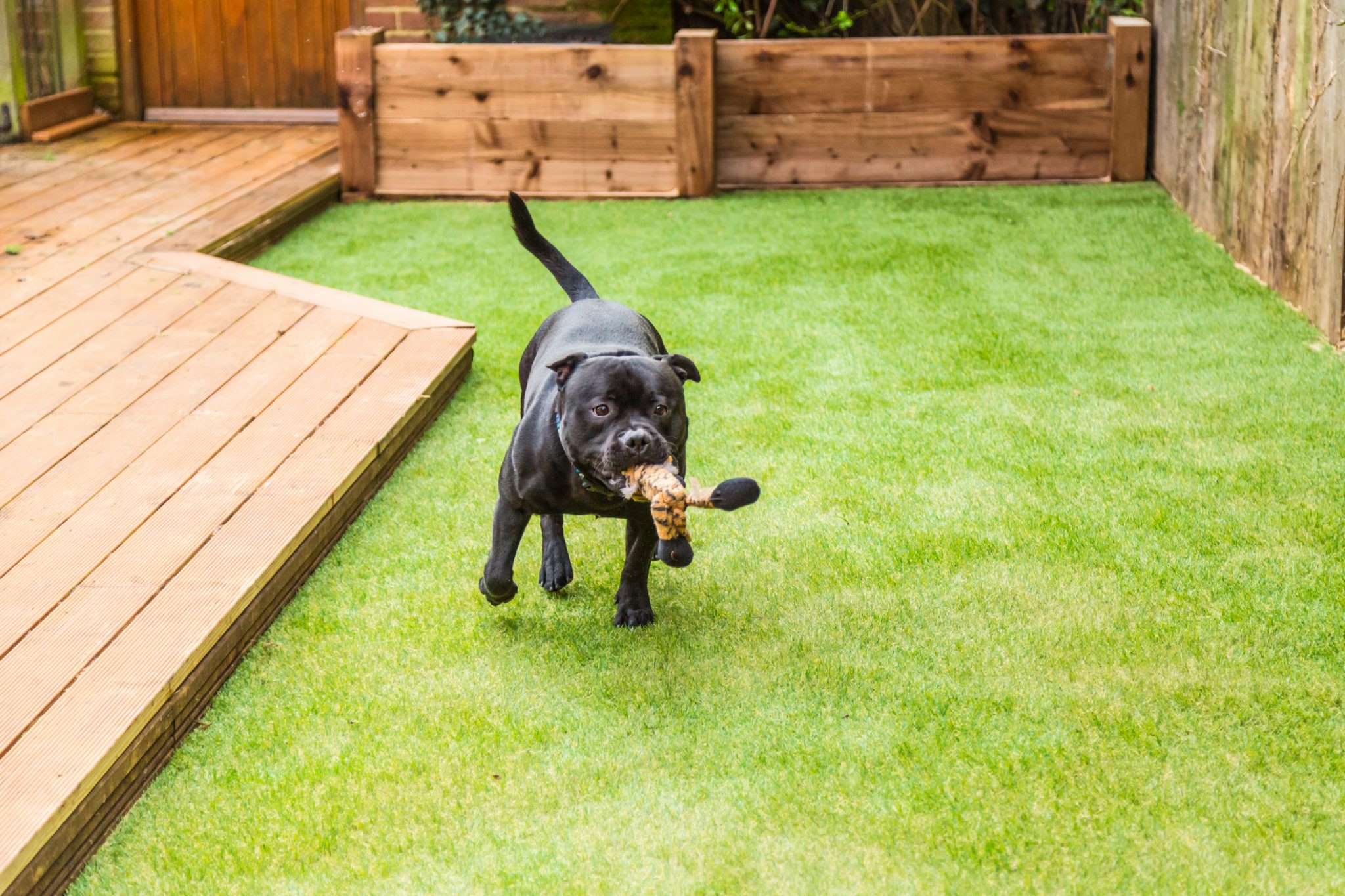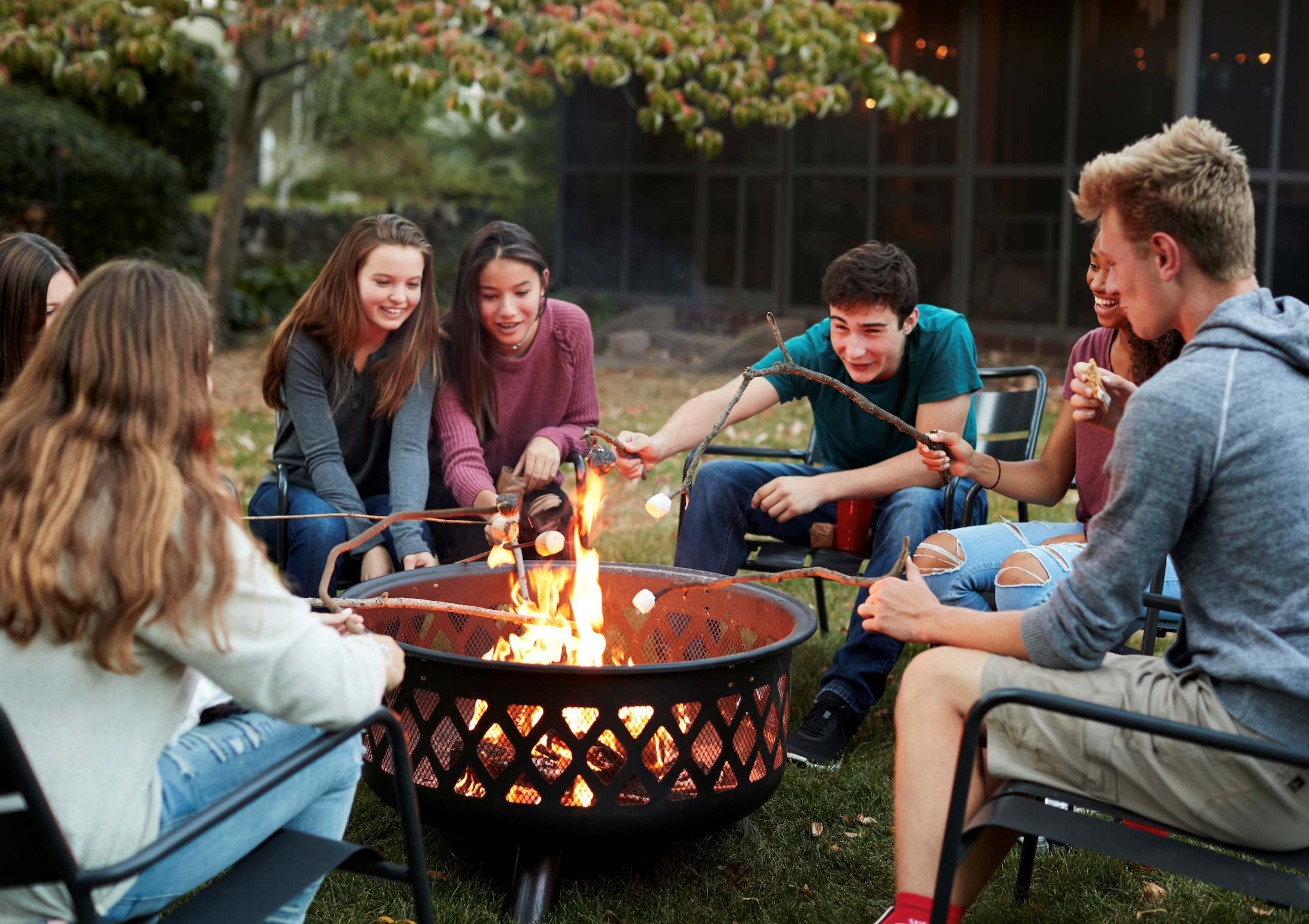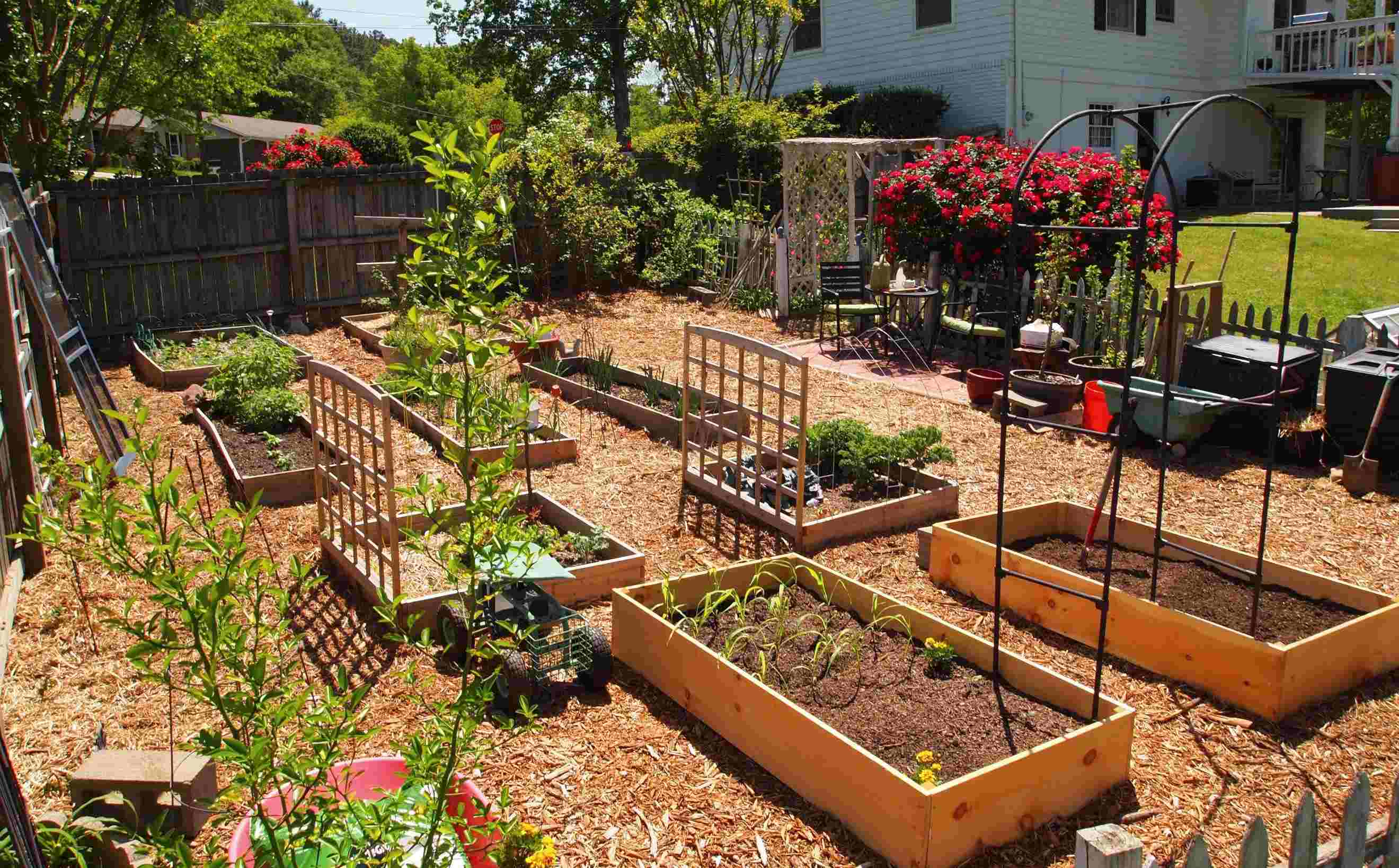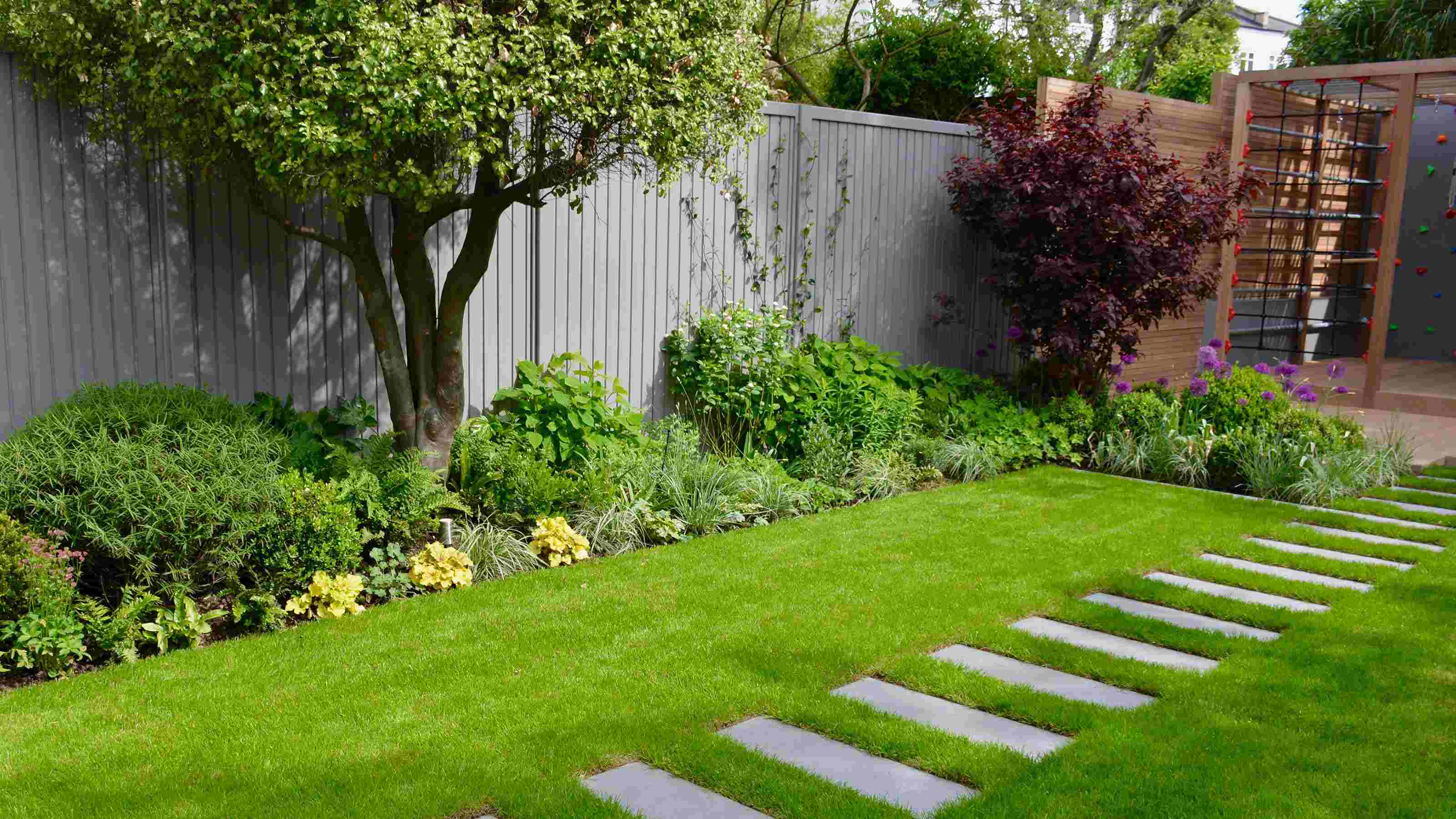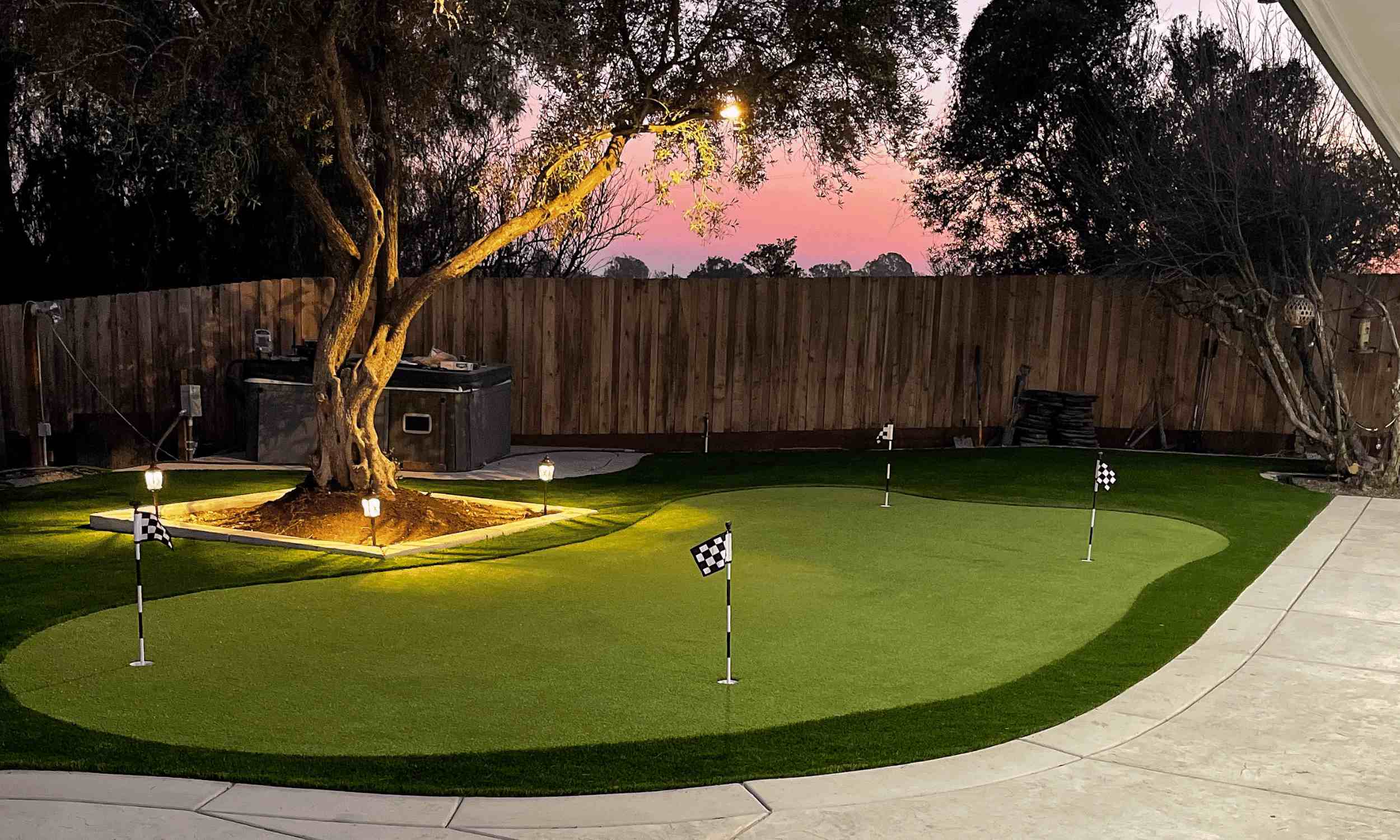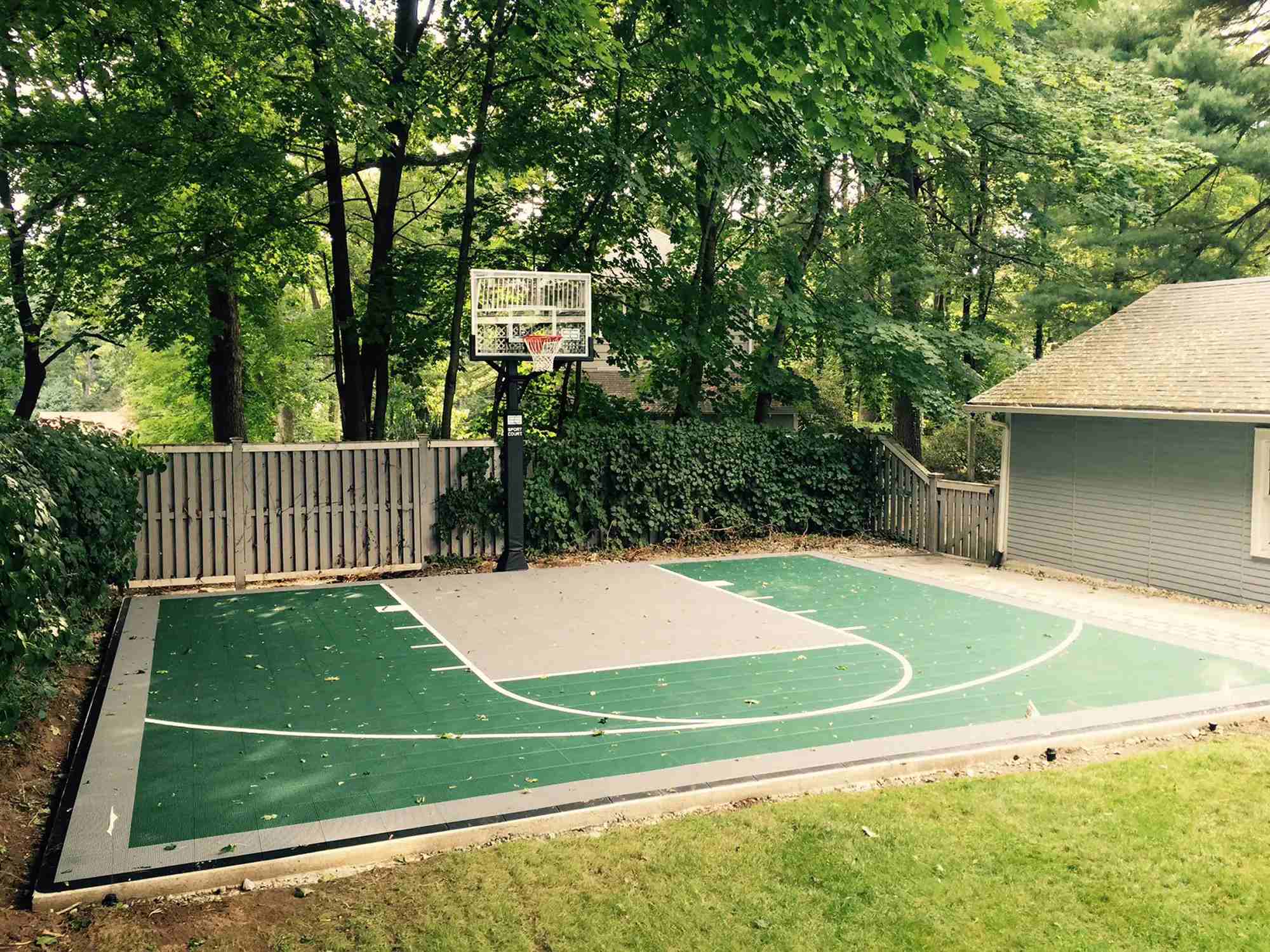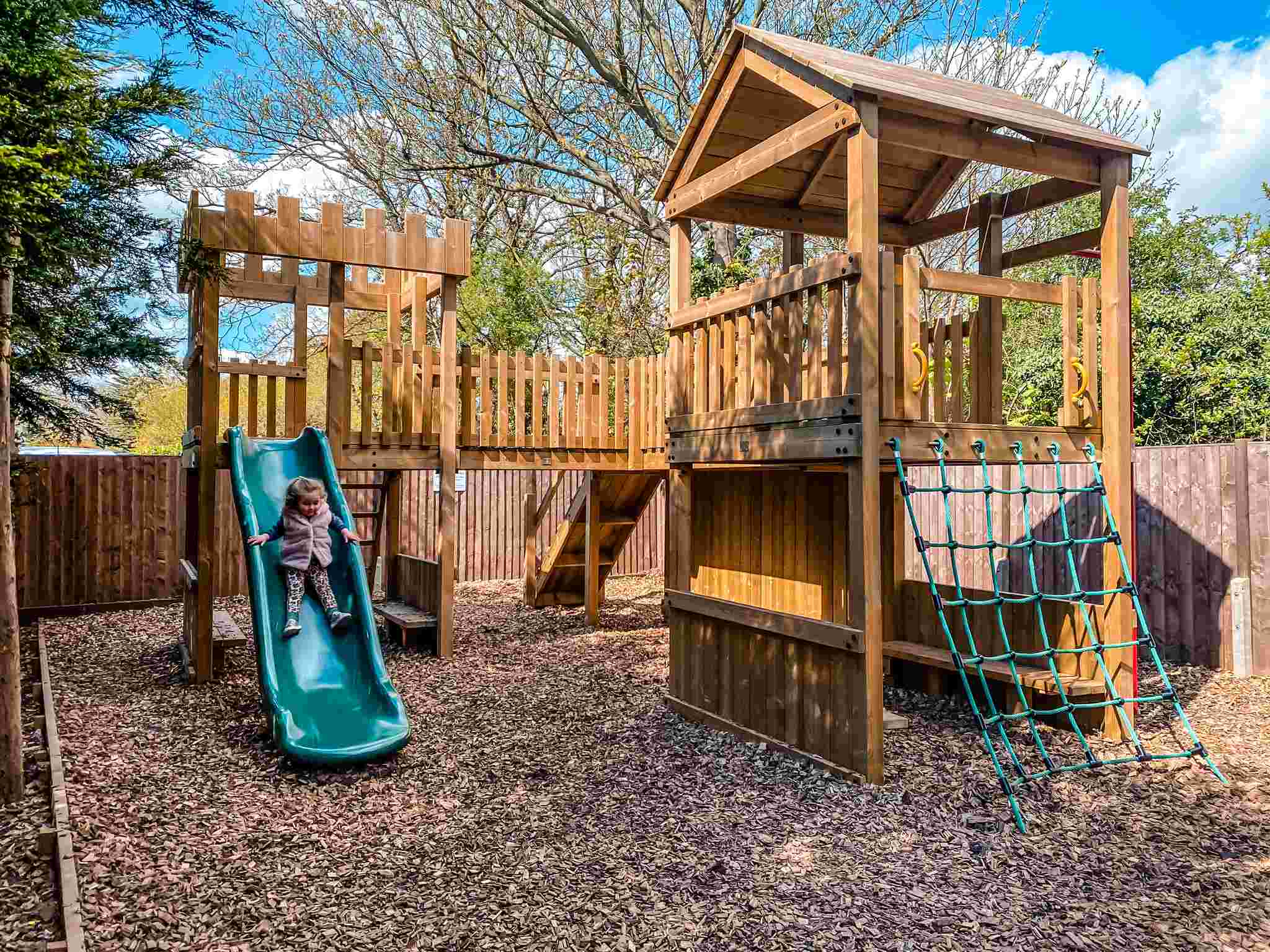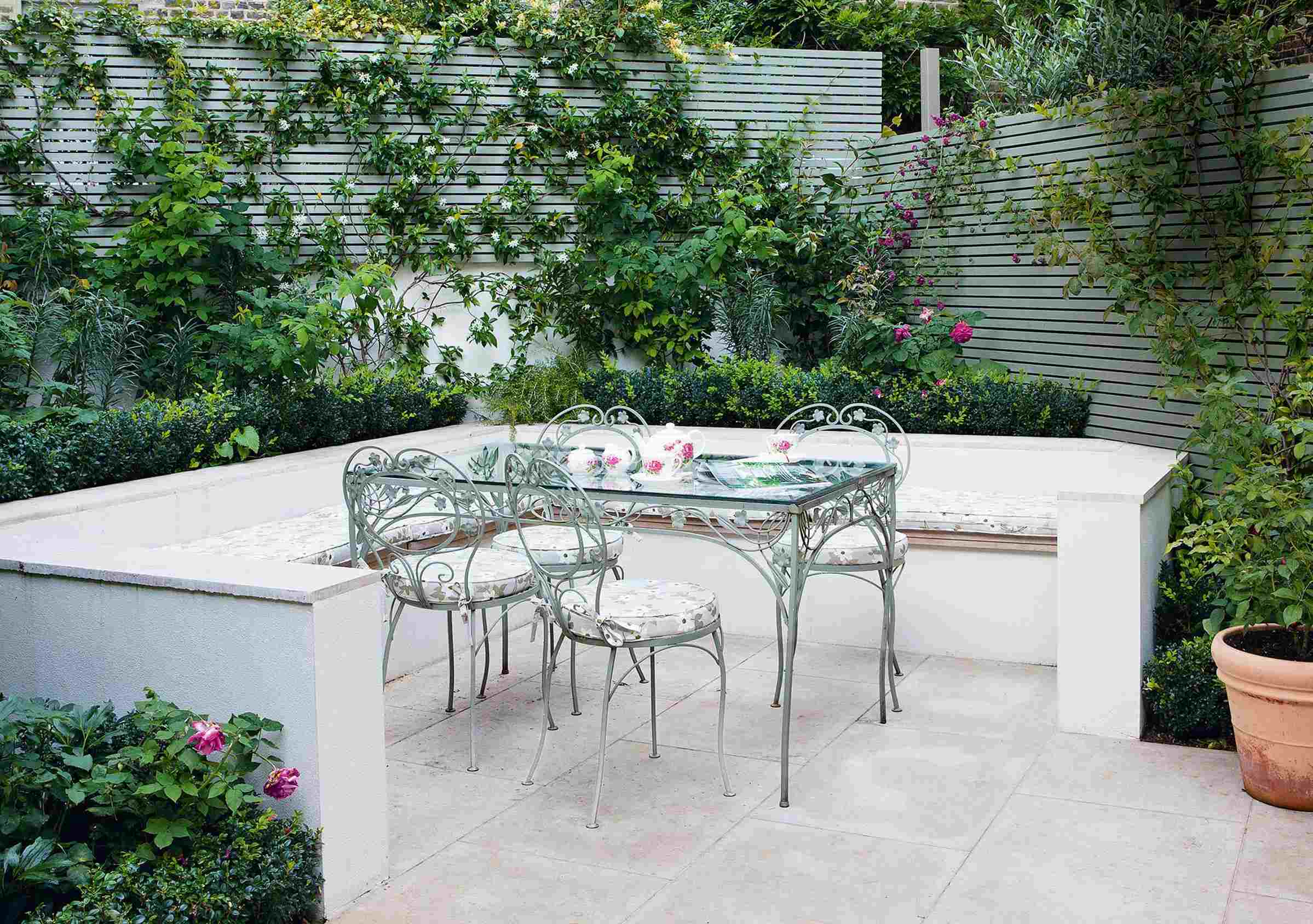Home>Garden Design>How To Make Small Backyard Look Bigger
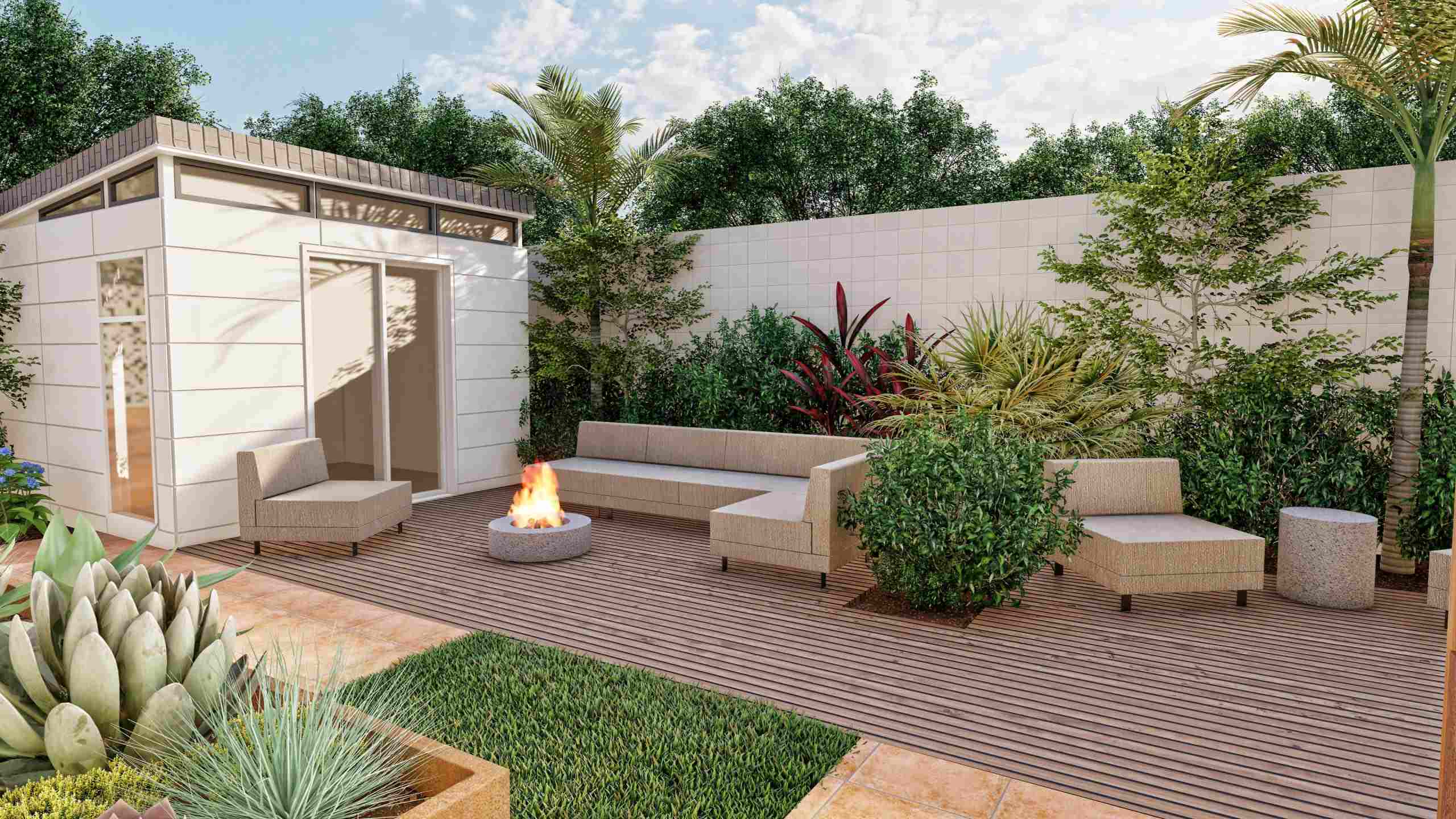

Garden Design
How To Make Small Backyard Look Bigger
Modified: January 22, 2024
Learn the secrets of landscape design to transform your small backyard into a spacious oasis. Discover how to make your space look bigger with clever landscaping techniques.
(Many of the links in this article redirect to a specific reviewed product. Your purchase of these products through affiliate links helps to generate commission for Chicagolandgardening.com, at no extra cost. Learn more)
Table of Contents
Introduction
Welcome to the world of landscape design, where creativity, craftsmanship, and a touch of greenery can transform any small backyard into a visually stunning and spacious oasis. If you have a compact outdoor space, don’t fret! There are plenty of strategies and techniques that can make your small backyard appear larger and more inviting.
A small backyard does not mean compromising on style or functionality. With some careful planning and a bit of imagination, you can create a beautiful and functional outdoor space that feels much larger than its actual dimensions. In this article, we will explore ten essential tips and tricks to maximize the visual impact and optimize the layout of your small backyard.
Whether you dream of a cozy sanctuary or a vibrant entertainment area, these tips will help you make the most of your limited space while creating an inviting atmosphere for relaxation, socializing, and enjoying the great outdoors.
So, if you are ready to embark on a journey to transform your small backyard into a breathtaking retreat, let’s dive into the world of landscape design and discover how you can make your small backyard look bigger.
Optimize Layout and Circulation
The layout of your small backyard is pivotal in creating the illusion of space. By optimizing the layout and circulation of your outdoor area, you can maximize the functionality and visual appeal of the space.
Start by analyzing the shape and size of your backyard. Consider the natural flow of movement and how people will navigate through the space. Aim for a layout that allows for easy circulation and does not feel cramped or cluttered.
One effective strategy is to create defined pathways that lead the eye towards different areas of the backyard. Use materials such as stepping stones or pavers to delineate these paths and create a sense of structure. This not only enhances the visual appeal of your backyard but also makes it feel larger by guiding the flow of movement.
When positioning furniture and features, think about how they will impact the overall flow. Avoid placing large items, such as a dining table or lounge chairs, in the middle of the yard, as this can obstruct movement and make the space feel cramped. Instead, consider placing them against the perimeter or walls to free up the central area.
Additionally, create open spaces and avoid filling every nook and cranny with furniture or decor. Embrace the concept of negative space, as it allows the eye to rest and creates a sense of airiness in the backyard. This trick can make the space feel more spacious and open.
Lastly, consider the placement of plants and greenery. Incorporate vertical elements, such as trellises or hanging plants, to draw the gaze upwards and create a sense of height. This not only adds visual interest but also makes the backyard feel larger by utilizing the often-underutilized vertical space.
In optimizing the layout and circulation of your small backyard, remember to strike a balance between functionality and aesthetics. The goal is to create a space that is both visually appealing and practical to navigate, ultimately giving the impression of a larger outdoor area.
Choose Appropriate Furniture
The choice of furniture plays a crucial role in maximizing the space and functionality of your small backyard. By selecting appropriate furniture pieces, you can create a comfortable seating area without overwhelming the space.
When it comes to small outdoor spaces, it’s essential to prioritize functionality and versatility. Look for furniture that is lightweight, compact, and easy to move around. Opt for folding chairs, stackable stools, or modular seating options that can be easily rearranged to accommodate different activities and gatherings.
Consider the scale of the furniture as well. Avoid oversized or bulky pieces that will overpower the space. Instead, choose furniture with sleek profiles and slim silhouettes. This will create an open and airy feel while maximizing the available seating area.
Another tip is to opt for furniture with built-in storage. Look for benches or ottomans that can double as storage solutions for cushions, gardening tools, or outdoor toys. This will help keep your small backyard organized and clutter-free.
In terms of materials, choose furniture that is weather-resistant and durable. This ensures that your pieces will withstand the elements and maintain their quality over time. Additionally, consider furniture with light or neutral-colored upholstery that reflects light and creates a sense of spaciousness.
Lastly, consider multi-functional furniture pieces. Look for tables that can double as planters or stools that can be used as side tables. By incorporating multi-purpose furniture, you can make the most of your limited space and enhance the functionality of your small backyard.
Remember, the goal is to strike a balance between comfort, functionality, and space optimization. By choosing appropriate furniture, you can create a cozy and inviting seating area without sacrificing the visual appeal or functionality of your small backyard.
Utilize Vertical Space
When working with a small backyard, it’s crucial to utilize every inch of available space, including the vertical dimension. By taking advantage of vertical space, you can create visual interest, add depth, and make your small backyard appear larger.
One way to maximize vertical space is by using tall planters or vertical gardens. These not only bring greenery into your outdoor area but also draw the eye upward, creating the illusion of height. Consider using trellises or arbors to support climbing plants, adding texture and depth to your backyard.
Another effective strategy is to hang plants or use hanging baskets. By suspending plants from pergolas, overhangs, or porch ceilings, you can add a touch of nature without taking up valuable floor space. This technique not only adds visual interest but also creates a sense of airiness and expansiveness.
Consider incorporating wall-mounted shelves or plant racks as well. These can be used to display potted plants, small decor items, or even outdoor artwork. By utilizing vertical surfaces, you free up floor space and create a visually appealing focal point.
Additionally, vertical space can be used to hang outdoor lighting fixtures, such as string lights or lanterns. This not only adds ambiance to your small backyard but also creates a cozy and inviting atmosphere.
Lastly, consider the vertical arrangement of furniture. Utilize vertical shelving units to store gardening tools, pots, or other outdoor essentials. Opt for tall bookcases or storage cabinets to keep your outdoor area organized and clutter-free. By using vertical storage solutions, you can optimize the space available and create a neat and tidy backyard.
Remember, when it comes to vertical space, the key is to think creatively and make the most of every opportunity to add height and depth to your small backyard. By incorporating vertical elements, you can make the space feel larger and more visually appealing.
Incorporate Mirrors
An ingenious and underrated trick to make your small backyard look bigger is to incorporate mirrors strategically. Mirrors have the incredible ability to create an illusion of space and depth, giving the impression of a larger outdoor area.
Consider placing mirrors on the walls or fences of your small backyard. This not only reflects light but also visually expands the space. Choose mirrors with decorative frames or interesting shapes to add style and personality to your outdoor area.
Position the mirrors in areas that will reflect greenery or focal points, such as a beautiful flower bed or a captivating feature. This adds an element of surprise and draws the eye beyond the actual boundaries of your backyard, making it appear larger.
Another creative way to utilize mirrors is by incorporating them into functional objects. Look for furniture pieces that have mirrored surfaces, such as coffee tables or console tables. These pieces not only serve their practical purpose but also reflect the surrounding environment, creating an illusion of spaciousness.
Additionally, consider using mirrored tiles or mirrored mosaic panels as accents. These can be placed strategically on walls or even on the ground, creating a stunning visual effect of an expanded space.
When incorporating mirrors into your small backyard, be mindful of their placement. Avoid positioning mirrors in a way that reflects direct sunlight into seating areas, as this can be uncomfortable. Also, ensure that the mirrors are securely fastened and resistant to outdoor elements.
As the saying goes, “mirrors don’t just show you what you look like, they also reflect your imagination.” By incorporating mirrors into your small backyard, you can unleash your creativity and transform the space into a visually captivating and seemingly larger oasis.
Use Light Colors
In the realm of small backyard design, the power of color should not be underestimated. Choosing the right colors can significantly impact the perception of space. When it comes to making your small backyard look bigger, opt for light colors to create an illusion of openness and brightness.
Consider using light-colored paint on fences, walls, or any other vertical surfaces in your backyard. Shades of white, cream, or pastel colors can reflect light and make the space feel more expansive. These hues also create a serene and calm atmosphere, perfect for relaxation and enjoyment.
When selecting outdoor furniture or cushions, opt for light-colored fabrics. Neutral tones or pastel shades can visually expand the seating area and create an airy feel. Light-colored cushions, pillows, and rugs can also help to brighten up the space and make it appear more inviting.
Incorporating light-colored flooring materials, such as pale tiles or light-colored decking, can also contribute to the overall effect. The light flooring reflects natural light, creating a sense of spaciousness and adding brightness to the backyard.
Add pops of color with accessories, such as bright flowers, colorful throw pillows, or vibrant pots. These colorful accents can create focal points and add visual interest to the space. However, be mindful not to overwhelm the area with too many bold colors, as this can make it feel crowded and smaller.
Furthermore, take advantage of natural light by keeping windows and doors uncovered or using sheer curtains. Natural light not only illuminates the space but also gives the illusion of a larger area. If privacy is a concern, consider using translucent screens or frosted glass to maintain privacy while still allowing light to filter through.
Remember, when it comes to color selection, the goal is to create a harmonious and light-filled atmosphere. Light colors reflect light and make your small backyard appear larger, brighter, and more inviting.
Create Distinct Zones
A clever way to make your small backyard look bigger is to create distinct zones within the space. By dividing your outdoor area into different functional areas, you can maximize its usability and create the illusion of a larger landscape.
Start by assessing your needs and desired activities for your backyard. Do you want a dining area, a cozy seating nook, a play area, or a garden? Based on your preferences, divide the space into separate zones dedicated to each activity.
Use different flooring materials, such as decking, pavers, or gravel, to visually separate each zone. This delineates the areas and creates a sense of order and structure. The distinct flooring materials can also create a visual contrast, making the space seem larger.
Consider using dividers, such as trellises, pergolas, or large planters, to define the boundaries between the zones. These structures not only add architectural interest but also create a perception of separate spaces within the overall backyard layout.
When it comes to creating distinct zones, scale is crucial. Ensure that the size of each functional area is proportional to the available space. Avoid overcrowding with oversized furniture or features, as this can make the backyard feel cramped.
For cohesive design and flow, maintain a visual connection between the different zones. This can be achieved through careful placement of plants, colors, or repeating design elements. Creating a harmonious transition from one zone to another makes the space feel more interconnected and seamless.
Another tip is to utilize vertical elements, such as tall plants or tall furniture, to visually separate the zones. This helps to create a sense of depth and layers, making the backyard appear larger.
By creating distinct zones within your small backyard, you not only optimize the functionality of the space but also make it visually appealing and spacious. Each zone serves a specific purpose, contributing to an overall cohesive and well-designed outdoor area.
Take Advantage of Natural Light
Natural light is a powerful tool when it comes to making your small backyard look bigger and more inviting. Maximizing the use of natural light can create a sense of openness, brightness, and expansiveness in your outdoor space.
First and foremost, ensure that your backyard is not obstructed by unnecessary structures or overgrown foliage that may block natural light. Trim trees or bushes that cast shadows onto the yard and consider removing any unnecessary barriers that limit sunlight from entering the space.
Strategically position seating areas and outdoor furniture to make the most of the natural light available. Place seating arrangements in areas where they can bask in sunlight, creating sunny nooks or cozy spots that maximize the enjoyment of your backyard.
Consider incorporating reflective surfaces or materials. Use glossy finishes on outdoor furniture, such as tables or seating, to reflect sunlight and create a brighter atmosphere. Install mirrors or glass features strategically to amplify and reflect natural light, making the space feel more open and spacious.
Choose light-colored materials and finishes for your outdoor surfaces. Light colors, such as pale tiles or light-colored stones, reflect more light and create a brighter overall ambiance in your backyard. Light-colored furniture and cushions can also reflect sunlight, further enhancing the perception of a larger space.
Utilize transparent or sheer window coverings, such as curtains or blinds, that allow natural light to filter through while still providing privacy. By harnessing natural light, you can create a cozy and inviting atmosphere during the day.
Lastly, consider the placement and design of windows and doors in your home that offer views of your backyard. Positioning these openings strategically can create a seamless connection between indoor and outdoor spaces, making your backyard feel like an extension of your living area.
By taking advantage of natural light, you can enhance the visual appeal and perceived size of your small backyard. The dynamic interplay of sunlight not only creates a brighter and more inviting atmosphere but also gives the illusion of a larger outdoor space.
Incorporate Strategic Landscaping
Strategic landscaping is key when it comes to maximizing the visual impact and perceived size of your small backyard. By carefully planning and integrating various landscape elements, you can create an inviting and expansive outdoor space.
Start by choosing plants that are appropriate for your small backyard. Opt for compact and low-maintenance varieties that won’t overcrowd the space or require constant pruning. Consider vertical gardening techniques, such as using hanging baskets or tall planters, to maximize greenery without sacrificing floor space.
Creating layers in your landscaping can also work wonders. Use different heights of plants, from ground cover to medium-sized shrubs, to create depth and add visual interest to the space. Incorporate ornamental grasses, which sway in the wind and create a sense of movement, enhancing the overall appeal of your small backyard.
Strategically placing focal points and garden features can enhance the perceived depth and scale of your backyard. Install a small water feature, such as a fountain or a birdbath, to create a sense of serenity and tranquility. Or, consider adding a sculpture, an arbor, or a pergola to draw the eye and create a point of interest.
Integrate pathways or stepping stones to create a sense of exploration and guide the gaze through the backyard. This helps to break up the space and adds an element of intrigue. Use materials that complement the overall design aesthetic while providing a functional and visually appealing solution.
Implement a variety of textures and colors in your landscaping design. Mix different foliage textures, such as soft and feathery leaves with glossy or variegated ones, to add visual richness. Incorporate flowers of different colors and sizes to create a vibrant and diverse outdoor space.
Lastly, incorporate hardscaping elements to add structure and form to your small backyard. Use materials such as stones, timber, or composite decking to create defined seating areas or raised platforms. These features not only add functionality but also create an impression of a larger, well-designed outdoor space.
By incorporating strategic landscaping elements, you can transform your small backyard into a visually stunning and inviting oasis. The careful selection and placement of plants, focal points, and hardscaping features can create a sense of depth and expansiveness, maximizing the overall appeal of your outdoor space.
Use Multi-functional Furniture
When dealing with a small backyard, every inch of space is precious. One effective way to optimize your outdoor area is by incorporating multi-functional furniture. These versatile pieces not only provide comfort but also serve multiple purposes, making the most out of limited space.
Look for furniture items that offer built-in storage solutions. For example, consider benches or ottomans with hidden compartments that can be used to store cushions, gardening tools, or outdoor accessories. This way, you can keep your backyard tidy and free from clutter.
Invest in tables that can be easily transformed or extended. Folding or drop-leaf tables are excellent choices as they can be expanded when needed and folded away when not in use, saving valuable space. These tables can be used for dining or hosting gatherings, then easily stored when you need extra room.
Consider seating options that can double as storage or additional seating. For instance, large outdoor poufs or ottomans can serve as seating for guests while also providing hidden storage inside. This allows you to have extra seating when needed while keeping your space organized and uncluttered.
Modular furniture sets are another excellent choice for small backyards. These sets typically include pieces that can be rearranged and combined to create different seating configurations. This versatility allows you to adapt the furniture layout to suit various occasions and maximize the use of your space.
Furthermore, seek out furniture items that can serve multiple functions. For example, a coffee table with a removable tray can transform into a serving tray for drinks and snacks during gatherings. A daybed with a retractable canopy can provide both lounging and shade options for a relaxing outdoor experience.
Remember to choose furniture pieces that are appropriately scaled for your small backyard. Bulky or oversized furniture can overwhelm the space and make it feel cramped. Opt for sleek and compact designs that fit well within your outdoor area, maintaining a sense of spaciousness.
By utilizing multi-functional furniture, you can make the most of every inch in your small backyard. These versatile pieces not only provide practicality but also help create a versatile and adaptable outdoor space to suit your various needs and activities.
Eliminate Clutter
When working with a small backyard, keeping it clutter-free is essential to maintain a spacious and organized outdoor space. By eliminating clutter, you create a visually appealing environment that makes your small backyard feel larger and more inviting.
Start by decluttering any unnecessary items or objects that are taking up valuable space. Assess your outdoor area and remove any unused or broken furniture, toys, or equipment. This will instantly create a more open and spacious atmosphere.
Invest in outdoor storage solutions to keep your belongings organized and out of sight. Use weather-resistant bins, cabinets, or sheds to store gardening tools, toys, and other outdoor necessities. By having designated storage, you can free up valuable space in your backyard and maintain a tidy environment.
Consider minimizing the number of decorative elements and accessories. While it’s important to add personal touches and style, too many decorative items can create visual clutter and make the space feel busy. Choose a few focal pieces or accents that are meaningful to you and place them strategically.
Create designated zones or areas for different activities. For example, designate a specific spot for gardening tools and equipment, a separate area for outdoor games, and another for lounging or dining. This helps to keep things organized and ensures that everything has its proper place.
Keep pathways clear and unobstructed. Avoid placing furniture, potted plants, or other objects in walkways, as this can create a bottleneck and make the space feel cramped. Optimize the flow of movement by allowing for easy navigation throughout the backyard.
Regularly maintain and prune your plants and greenery. Overgrown shrubs or trees can encroach on the usable space and make the backyard feel smaller. Keep your plants well-maintained and ensure they are trimmed to an appropriate size to preserve a sense of openness and spaciousness.
Finally, regularly assess and reevaluate the items in your backyard. As seasons change or your needs evolve, consider rotating or updating decor and furniture pieces. This allows you to refresh the look of your outdoor space while avoiding overcrowding and maintaining a clean and clutter-free backyard.
By eliminating clutter, you can create a serene and open atmosphere in your small backyard. Keeping the space organized and tidy will not only make it appear larger but also enhance your enjoyment and relaxation in your outdoor oasis.
Conclusion
Transforming a small backyard into a visually stunning and spacious oasis is an achievable goal with the right strategies and techniques. By optimizing the layout, choosing appropriate furniture, utilizing vertical space, incorporating mirrors, using light colors, creating distinct zones, taking advantage of natural light, incorporating strategic landscaping, using multi-functional furniture, and eliminating clutter, you can make your small backyard look bigger and more inviting.
When it comes to optimizing the layout, carefully plan the circulation and use pathways to guide movement. Choose furniture that is compact and versatile, allowing for easy rearrangement. Utilize vertical space by incorporating hanging plants, trellises, and mirrors to create the illusion of height and breadth.
Light colors and strategic use of natural light can make a significant impact on the perceived size of your small backyard. Creating distinct zones and incorporating strategic landscaping elements will add depth and functionality to the space.
Lastly, incorporating multi-functional furniture and eliminating clutter will help maximize space and maintain an organized outdoor area. With these tips in mind, you can create a small backyard that feels open, inviting, and filled with possibilities.
So, unleash your creativity, embrace the possibilities, and transform your small backyard into a breathtaking retreat that you will enjoy for years to come.
